Glass.

[ GLASS ]
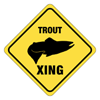
about cam2

[ GLASS ]

about cam2

New Year’s day may have come and gone but it’s still early enough in 2012 to set forth a few more predictions before the year really gets underway. The latest prophecy comes from the tech experts at Frog, who have foreseen a future that includes biomimicry, a smarter use for Facebook and better mobile phones for the rest of the world. [via Fast Co.]
12. Connected Cities
People can learn about and even experience a place before ever setting foot in it. Our Austin studio recently hired a creative director from Brooklyn who used the fly-through experience in Google maps to get a feel for a neighborhood where he was home shopping. As this mountain of data becomes more accessible, we will find ourselves more connected with information, with each other, and with the city that surrounds us.
11. Taking Computers Out of Computing
Voice recognition technology has finally hit its tipping point of capability, and the stage is being set for a generation of users to start assuming voice control, just as touch control is now assumed for any screen. But the spoken word is only a fragment of any conversation. Computer vision–especially depth-sensing cameras–will be able to pick up nonverbal cues such as gesturing or body language that complete human communication. When voice and gesture comprehension are paired, humans will be able to address technology naturally, without command jargon. The tactical steps being taken in 2012 are to “design the human” as the primary interface device in support of that.
10. The Reductive Social Network: Technology Finally Gets Personal
Our Internet personalities have evolved into amplified personas that aren’t truly us. The current fervor around cloud computing only exacerbates the problem: Now, my 10,000 digital photos are in the ether, but am I any more emotionally connected with them and sharing them with my three closest friends in a meaningful way? This is about culling from the terabytes and sharing with the single digits. In 2012, product companies will deliver new products that begin narrowing the social circle and capturing intimacy and authenticity.
9. Gadget Convergence Will Lead to Specialization
I read countless blog posts proclaiming that dedicated devices, like the camera and the watch, will rapidly shrivel and die. Instead, I think new technologies will provide opportunities for them to get better. When users purchase a dedicated device, they are gravitating towards products with higher quality and better design to elevate their experience. It turns out that the convergent device is killing the commodity digital product while forcing everything else to improve. This is presenting companies and brands with an opportunity to do what designers love: Make things better!
8. Rein in the Clouds!
We’re rapidly moving into a technology space where mobility is becoming less about a set of devices and more about the pervasive mist of data that we all generate with every interaction on the Internet. Managing, securing, and understanding this data will play a huge part in technology over the next few years. Moreover, making that data comprehensible to the consumer is key. The question has never really been, Is this possible? but rather, When will we have an ecosystem of compelling and useful devices and services that will integrate seamlessly into people’s lives? We think that time is finally arriving in 2012.
7. Reputation-Enhanced Lending and Trading Goes Mainstream
While logging in to third-party websites using your Facebook identity is now commonplace, we are beginning to see person-to-person exchanges making use of social networks to broker trust. For example, before you stay at someone’s spare bedroom via Airbnb, you have to sign in with your profile. I recently rented someone’s house in Toronto for a few days, and between our respective social networks, we found enough friends, relatives, and colleagues in common for him to lend me the property with confidence. In 2012, this reputation-enhanced lending and trading will become mainstream. We will lease, barter, and trade with relative strangers, banking on their reputations and connections.
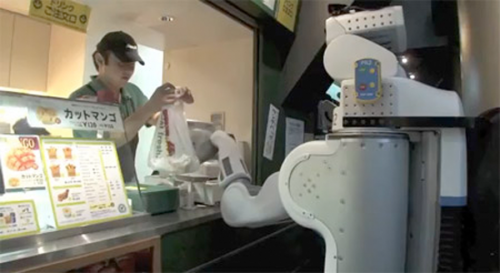
The University of Tokyo and Technische Universität München, uses semantic search to task a PR2 robot with fetching a sandwich. The PR2 has no detailed information on sandwiches, but its database tells it that sandwiches are a type of food, and that food can be found in kitchens and restaurants, its database also has maps and locations, and from that, it figures out where to look. The robot has to figure out how to find and use an elevator to a lower level where a Subway is located.
“Semantic search” is the process of deriving logical conclusions from premises known or assumed to be true. In this example it’s a computerized version of what we humans think of as “common sense.” For example, if someone asks you to bring them a glass without telling you exactly where the glass is, you’re probably smart enough to infer that a glass can be found in cabinets or dishwashers, and cabinets and dishwashers are typically located in a kitchen, so you can go to the kitchen, poke around a bit, and find a glass.
[ willow garage ]



NASA unveils three concept designs for aircraft that could be ready to fly by 2025.
NASA appears to want development of a line of super-planes that are larger, faster, quieter and burn fuel slower and cleaner than today’s commercial aircraft. The three designs — from Northrop Grumman, Boeing, and Lockheed Martin — are part of a set of contracts to study advanced concept designs for airplanes that will eventually replace the planes flown today. “Each design has to fly up to 85 percent of the speed of sound; cover a range of approximately 7,000 miles; and carry between 50,000 and 100,000 pounds of payload, either passengers or cargo” all while producing “less noise, cleaner exhaust and lower fuel consumption.”
Other concepts at various stages of development below:
resources:
NASA press article
enjoy space
http://www.nasa.gov/topics/aeronautics/features/flight_2025.html
 August is “vacation month” worldwide.
August is “vacation month” worldwide.
With global warming threatening coastal cities and a new era of mass migration on the horizon, going mobile just might be today’s bright idea – and tomorrow’s way of life. Here are a dozen tech-packed trailers you can browse on your laptops while the kids play in the water.
Rolling stone.
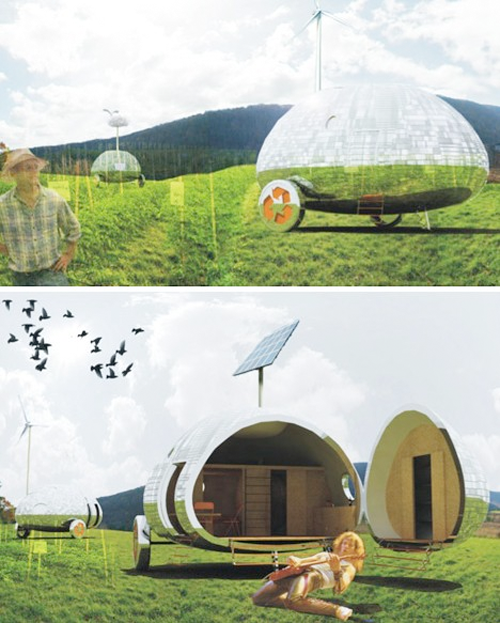
above: (images via: Dornob and Inhabitat)
Slovakia-based Nice Architects has a nice idea for future mobile-homers: the Rolling Stone eco-capsule. Though not connected in any way with a certain English music group, a certain American pop culture magazine or a song by a certain singer named Bob Dylan, the Rolling Stone stands on its own when it comes to being environmentally friendly, self-sufficient and generally cute & cozy.
above: (images via: Balleride and Core77)
Those who wouldn’t be caught dead in a classic, Harvest Gold motor home might find the svelte & stylish Mehrzeller much more appealing. German for “multi-cell”, the Mehrzeller caravan concept maximizes interior space while displaying an organic, polygon exterior that resembles natural mineral crystals. The Mehrzeller hails from Graz, Austria, birthplace of another svelte & stylish object: California “Governator” Arnold Schwarzenegger.
above: (images via: All Hydrogen Cars and Fotki)
The 2030s, that is. Actually the Airstream concept Ford’s been showing off lately looks both ways: its eco-friendly hybrid hydrogen fuel cell is most futuristic while the silvery style and iconic name harken back to the good old dust bowl days when hydrogen power was all the rage… until that idea went down like a lead zeppelin.
Foldoub trailer
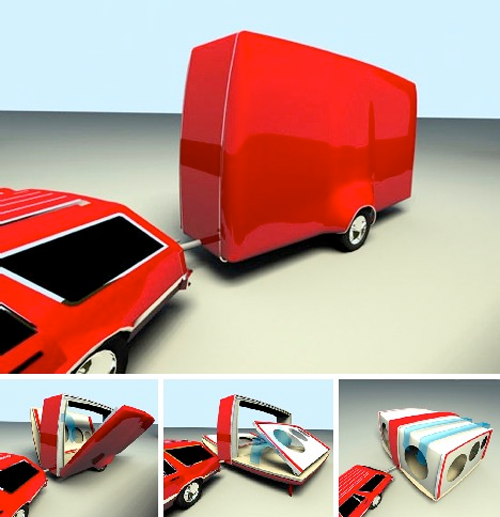
above: (images via: Treehugger)
Dutch designer Niels Caris has created a foldout trailer called, naturally, the Foldoub Trailer. Tow, park, push a switch and the whole kit & kaboodle opens up like Godzilla’s big pop-up book of home design. On the downside, the Foldoub Trailer has no kitchen, bathroom or storage… which could be a problem if you’re parked 50 miles past the “100 miles to Next Gas & Lodging” sign.
above: (images via: Busyboo and Yanko Design)
The 252° Living Area springs from the creative mind of French designer Stephanie Bellange. Small enough to be towed by a Mini, the 3-wheeled trailer features supporting feet that spread automatically once the trailer’s outside shell is opened. The interior parts follow, much like the petals of a blossoming flower.
above: (images via: Trendbird and Luxist)
The Colim Modular Camper is a car, a trailer and a motorhome all in one. Park at your campsite, then tour the sites in the two-seater convertible module. The interior lives up to the exterior’s promises as well, with flowing, organic surfaces and eye-pleasing colors – not a splinter of plastic wood anywhere. The Colim Modular Camper is eco-friendly as well, with a solar panel on the roof and a hybrid engine nestled under the hood.
above: (images via: Squob and DesignApplause)
The T@B XL takes the classic teardrop trailer concept and lifts it into a new level of luxury. T@B’s (pronounced “Tab”) lesser models are anything but trashy but the twin-axle XL definitely rules the roost. Sleekly styled, the XL still stretches 22 feet from stem to stern and is expected to be priced in the $60K range. That is, if manufacturer Knaus Tabbert manages to emerge from bankruptcy – times are tough for the purveyors of luxo-goods.
above: (images via: Carscoop and American Custom Trailers)
You’ve seen cars towing motorcycles, but how about ‘cycles towing cars? They may be scaled down a mite but these very cool trailers still evoke the spirit of pinstriped, big-tired muscle cars. Mustangs and Corvettes are featured but the manufacturer, American Custom Trailers, also takes custom orders.
above: (images via: Gear)
The Sylvan Sport GO trailer looks like a comfy pop-up camping trailer at first glance but the more you look, the more you see. Indeed, versatility is the Sport GO’s middle name. Weighing in at 800 lbs., the camper morphs into an ATV hauler, a camping gear hauler, basically whatever you need it to do. Calling it the Transformers of pop-up campers would be an understatement, though the Sport GO seems to be the non-combative type. Here’s a video of the Sylvan Sport GO in action:
The Sylvan Sport GO, via PCTV1
above: (images via: World’s Fair Community and Gizmag)
This intimidating mobile home concept from General Motors Advanced Design Group shows the beleaguered corporation isn’t bankrupt – at least when it comes to provocative ideas. The GMC PAD is sort of a Winnebago on steroids that sports 6 wheels, an enormous full length (and width) windshield and a curious articulating feature that extends a step-like device out from the, er, fuselage to ease entry and exit. The PAD runs on a diesel-Electric hybrid system and its innovative resource management technology ensures onboard fuel and water supplies will last weeks, even months.
above: (images via: Find A Property)
The Tumbleweed Tiny Home Company has got a good thing going. These tiny perfect houses come mounted on wheels, so by law they’re considered travel trailers and thus a building permit isn’t required. Tiny they are, however: could you live in 65 to 140 square feet of space without padding the walls?
above: (images via: Design Art Book)
The Capsule Caravan may look lke an oversized M&M but there’s nothing nutty about what’s inside. British designer David Tonkinson engineered the ovoid trailer to separate into distinct Comfort and Service Pods to keep men and machines apart. Conceived as a way to take in summer music festivals by day while resting comfortably by night, the Capsule Caravan is one of the sharpest trailers around – and that’s saying something as it’s one of the smoothest designs going.
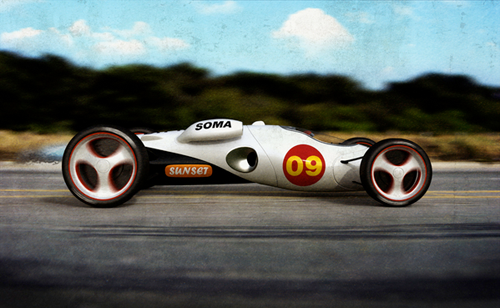 Talented designer, stylist, and illustrator.
Talented designer, stylist, and illustrator.
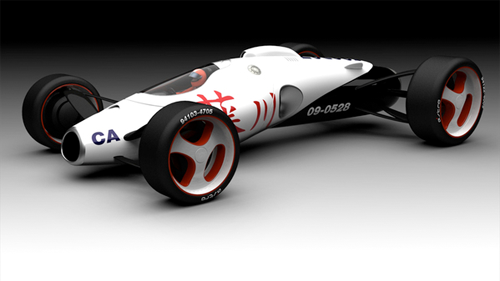
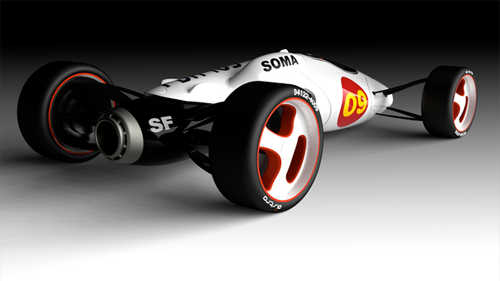

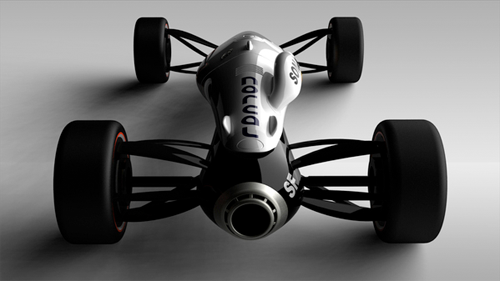
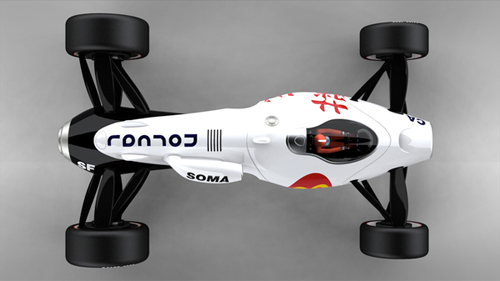
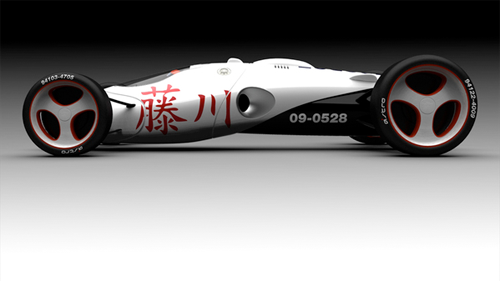
Designer: Norio Fujikawa
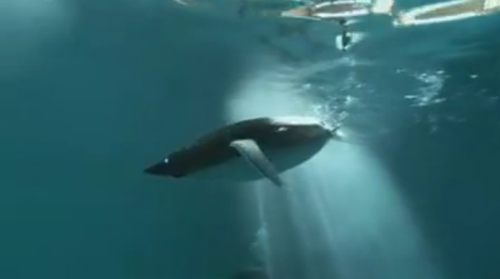 Festo is into two very interesting robots. One swims and one flies.
Festo is into two very interesting robots. One swims and one flies.
20 most important inventions of the next ten years. via businessweek. [PR]
Beam me up scottie. Scientists just did three feet. via geekologie [PR]
All content ©2007 > 2024 DesignApplause